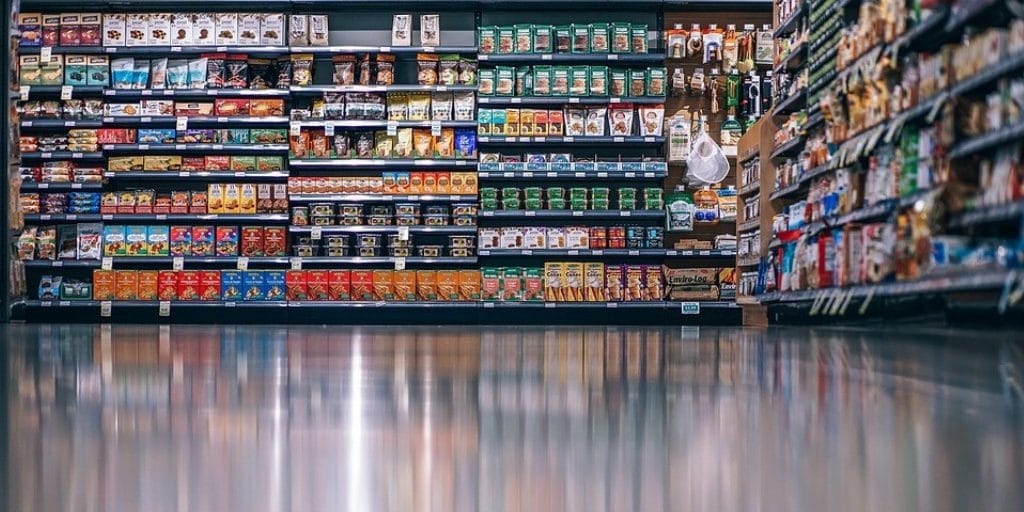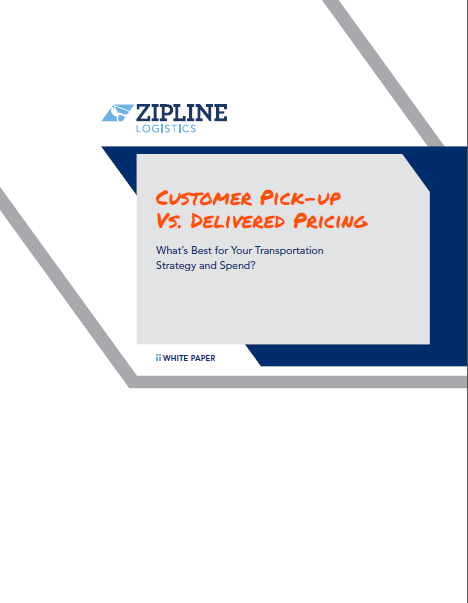
You’re an up-and-coming brand that just started working with a food distributor to get your product into more retail locations.
That’s a great win for your organization. Large food distributors like KeHE or UNFI can get your product onto previously unattainable shelf space, which adds up to increased exposure, potential revenue, and growth opportunities.
But now that your distributor relationship is all set; will you need a 3PL to manage your logistics function?
In short, yes. There are many nuanced factors that come into play when navigating the food and beverage game. While KeHE or UNFI can help you solve many of those, working with them is not necessarily a one-stop shop for retail or logistics success.
You will need to continue to manage aspects of your supply chain in order to maximize the effectiveness of food distributor relationships.
But before we get into all that. What is a food distributor?
What Do Food Distributors like KeHE Foods or UNFI Do?
Food distributors are third-party entities that act as middlemen between your brand and a retailer. Food distributors, like KeHE or UNFI, purchase products from vendors to disperse them among their established retail connections.
Who they sell to varies by the distributor as some have strong, singular connections with retailers as reflected in the UNFI and Whole Foods relationship. Whole Foods almost solely relies on its distributor, UNFI, to introduce new brands into its product network.
In cases like this, the distributor acts as a gatekeeper and is the primary route to get your brand onto the shelves at the retailer.
Others work with many different retailers and can get your product into a wide variety of stores across the country.
Before a distributor can transport your product to a retailer, they must first get your product into their network. Simple enough. But how you choose to get your order from your supply chain into theirs can make a world of difference.
Why You Still Need a 3PL When Working with UNFI or KeHe Food Distributors
In today’s retail market, on-time delivery is a necessity for your brand. The hypercompetitive state of food and beverage does not allow for vendors to let their logistics be an afterthought.
Here are a few reasons why outsourcing your logistics operation to an expert 3PL to manage delivery into a distributor is your best bet:
Complying with Receiving Hours
Often, distributors, like KeHE or UNFI, have odd receiving hours and require you to make deliveries in the middle of the night or very early in the morning.
To compound things further, these receiving hours can change from warehouse to warehouse even within a food distributor’s own network.
Successful delivery in these instances requires a carrier that has adapted its service hours to meet these specific operating timetables.
Without first-hand logistics experience, it can be a challenge to find a trusted carrier that understands the scheduling difficulties with these receivers.
A retail-specialized 3PL can pair your organization with a driver who is familiar with specific receiving hours and knows the stakes of not hitting a food distributor’s tight delivery window.
Carrier Choice
One of the most challenging aspects of delivery into a distributor’s supply chain is choosing the right carrier for the job. There are hundreds of carriers who will pick up your product, but far fewer will execute delivery as you intend.
Some of these nationwide carriers simply do not deliver into a food distributor’s network.
Unfortunately, this information will not always be disclosed prior to arranging shipment. We’ve heard numerous stories of carriers picking up product and ultimately failing to deliver the load, leaving the brand trying to recover the shipment, and finding a carrier to make the delivery.
Further muddying the waters, preferred carriers change from warehouse to warehouse even within a singular distributor’s network.
Some carriers who won’t make deliveries into the majority of the distributor’s network are conversely the preferred carrier at one of the distributor’s other locations.
For example, a national carrier YRC will not deliver into the overwhelming majority of UNFI locations throughout the country; however, they are a preferred carrier for the Moreno Valley UNFI location.
If this sounds confusing, you are correct. It’s necessary to work with an expert 3PL with on-hand knowledge of these arrangements and preferred carrier relationships.
Customer Pick-Up Difficulty
Despite the alluring promise of customer pick-ups, signing away your retail logistics function over to a food distributor does not always work out for the benefit of your brand.
As part of an agreement with your organization, KeHE or UNFI will offer to pick up your product from your warehouse and store it in theirs before transporting it into a retailer’s supply chain.
While tempting for many brands, letting a distributor manage your transportation can cause a multitude of issues for your organization.
If you opt for a UNFI or KeHE to pick up your product, it may seem like that will alleviate some of the above issues. But customer pick-up can result in other service failures.
Distributors schedule pick up with a carrier and at a time that makes the most sense for their network, not necessarily yours. Without scheduling the appointment, you lose the ability to set and monitor when a truck will arrive to pick up your order.
You might not have freight prepped when they choose to arrive, and this can lead to missed appointments and other scheduling difficulties, which can cause warehouse issues and fines for your organization.
Missed appointments are always the vendor’s responsibility when working with a distributor. Your organization will be fined by the distributor and possibly the carrier, as well as tasked with finding a delivery alternative.
An expert 3PL can analyze your supply chain and create an order pick-up strategy that is optimal for your warehouse and production schedules to ensure missed appointments are minimized.
Meeting Retail Delivery Requirements
Complying with retail delivery requirements is crucial for long-term success. If you are late with the delivery of your product to the distributor, even if it’s out of your control, your chances of meeting on-time delivery into a retailer are drastically reduced.
Since food distributors work with hundreds even thousands of brands, your product can be quickly replaced on a shipment ensuring that the distributor does not leave a retailer with out-of-stocks. This will keep the food distributor from paying the price for missing delivery.
However, your organization will still receive the retailer’s penalties. Late deliveries can add up to fines, fees, and strained retail relationships.
Often, retail buyers will stop working with brands that continually miss on-time standards. In a survey of prominent retail buyers from across the country, we found that:
- 100% of respondents said that a vendor’s ability to deliver product on-time impacted their willingness to work with them
- 73% of respondents said they have ended vendor relationships over delivery issues
By not meeting delivery appointments with a food distributor, through missed customer pick-ups or poorly executed shipments, you can permanently damage your retail relationships.
Missing deliveries is not something you want to take a gamble on. Control your logistics performance by working with an expert 3PL firm.
Logistics Specialists in Your Corner
You’ve gotten into business with a food distributor to get your product onto retail shelves. That’s their specialty. Logistics is ours.
Zipline Logistics works exclusively in the food and beverage sector. We have deep industry knowledge about best practices and retail requirements.
By working with Zipline, your brand can overcome food and beverage logistics challenges while exercising control over your supply chain. We work with vendors every day to optimize their transportation function to succeed at food distributor relationships.
Want more information on the pros and cons of customer pick-up vs. delivered orders?
 | Download: CPU vs. Delivered Pricing - What's Best for Your Transportation Strategy and Spend Download the free white paper to learn more about this important decision and how consumer brands can determine the best strategy for their transportation. This paper includes cost equations, real brand examples, and actionable insights. |